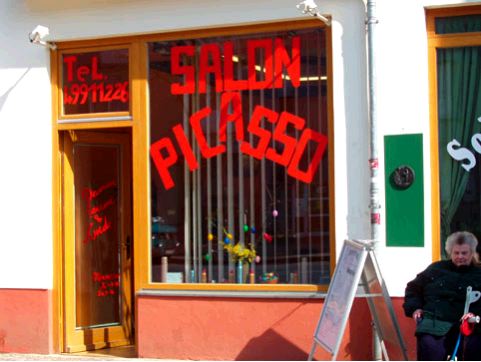

What did you show, and why at the hairdresser's Salon Picasso?
I showed ten drawings which were made and signed by school kids from Berlin after drawings by Pablo Picasso. In fact, I copied the children’s works and showed my re-drawings of the children’s Picasso copies. There happens to be a kebab, a grill and a hairdresser’s in the neighbourhood of my studio, which are all named Picasso. And I discovered those drawings in the primary school, also around the corner. I just had to do something with that stuff! The kebab and the grill refused to participate in the project, but Salon Picasso liked it.
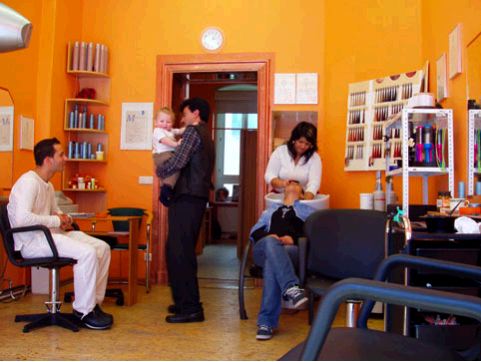
Doubling Picasso and documenting the show in the Internet indicates a potentially infinite context: The shop, its surrounding, the customers who become attentive to your work… . What’s your interest?
The hairdresser’s owner told me that she regards her profession as art; and since Picasso is, in her mind, the greatest artist, she named her shop after him. I just put myself in her position and imagined that “my” children had made drawings after Picasso which I wanted to show in my shop. And that was it! She liked the drawings very much, and she enjoyed to bring even more art into her shop. Since she regards her profession as art and I regard her shop as a piece of art, we were a wonderful supplement to each other. Maybe the drawings were only a pretence to work with her - although I think they are really exciting: The originals become totally unimportant, they could be variations of the drawings made by the kids! And actually I like the name Salon Picasso very much; not only because that’s an extraordinary hairdresser's but also because the name catches on to the tradition of the salons in modern art history, an aspect which seems to contextualize the drawings even more.
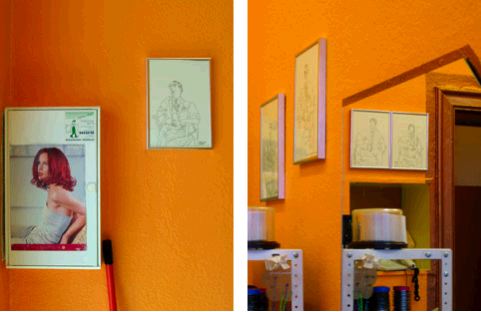
The “art world” was not invited and no information available in the exhibition. Why this concealment?
This kind of show has its own public, actually no “art public”. A hairdresser's simply needs customers. And I think it’s necessary that the art world gets informed only later: Such places are discovered alone or by two, and accidentally. It is difficult to mediate this experience without destroying it! The Internet documentation is not “the real thing”; but the hairdresser's exists… . I became attentive to it when a befriended artist, Jesper Alvaer, needed a hair cut on the occasion of his vernissage. I said to him: “Let’s go to Salon Picasso.” I filmed his hair cutting, and he showed it in his exhibition immediately afterwards. Furthermore, the shop’s owner told me that there was once an artist who showed his oil paintings in the Salon Picasso. So the place has its own artistic history, so far, and it goes on.
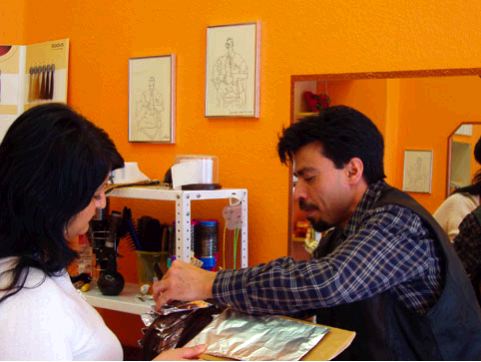
Do you see it as a subversive or just not quite a voluntary project? You make it in that secession outside official exhibition grounds: One could suspect that the usual art institutions do not appreciate your work sufficiently. Otherwise, it is common for artists to show at public places. How would you describe your motivation?
My motivation is a little bit of all the things you mentioned. Frustration and failure as creative energies are a romantic cliché but also everyday reality: To handle them subversively or with a sense of humour opens up chances which would stay unknown otherwise. Most people are but afraid of the failure and the frustration and don’t want to admit these feelings. – Artists exhibit, for example, in cafés, presumably if there are no regular shows offered to them; and then they want it to look as in a gallery. Trying to ignore the place means to fail.
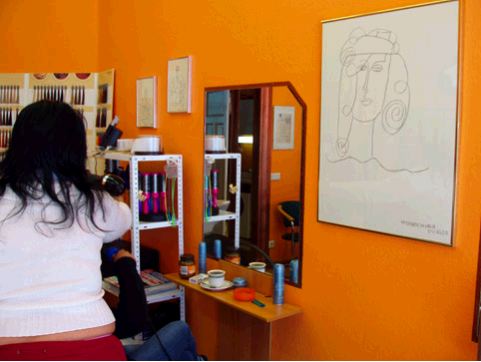
The project turns away from the traditional art institutions. But you change the chosen place into an institution while exhibiting there.
The places are already institutions – but not art institutions. Recently, it strikes me how many shows, films, publications, podium discussions and seminars are worried about the future of the art institutions, about how to attend to the “demands of contemporary art”. It is well known that artists are very interested in attending on institutions; it’s not quite the same vice versa. The problem seems to be that something like “art institutions” exist! If they didn’t exist, every institution would be a potential art institution. That's the point of my project: to consider each snack bar as a potential art institution. That’s why the project’s title is Re-Institutionalize.
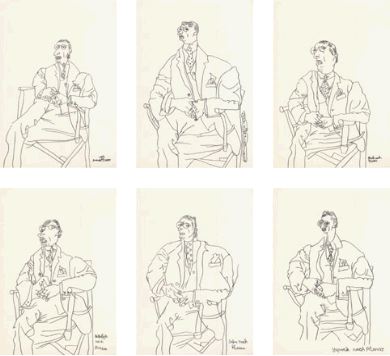
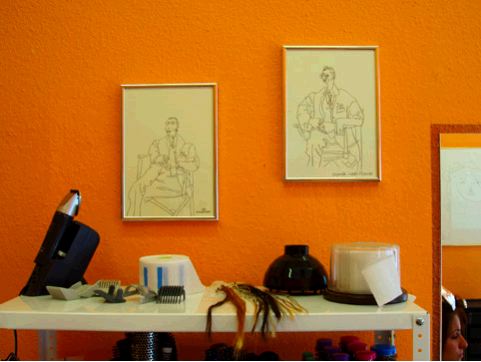
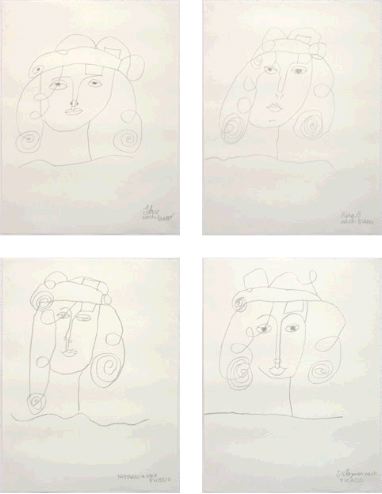
Your work seems to be influenced by your conception of being a professional artist. Isn’t it too demanding for a public which has, perhaps, quite different questions?
The “public” doesn’t feel like a “public” at all, I hope. Visitors of Salon Picasso are customers who, perhaps, talk about the drawings. Maybe the question about the relationship between the name of the hairdresser's and the drawings will rise? - I really enjoyed working there together with the employees. We installed the drawings together, and they also thought about the presentation. All the large portraits of women were fixed above existing hair-style posters. That was an experience of maximum working economy (the nails were already in the wall) and an optimum installation – one picture hidden by another. A friend, the artist Ondrej Brody, filmed the installation work, and we made a very fine film out of it.
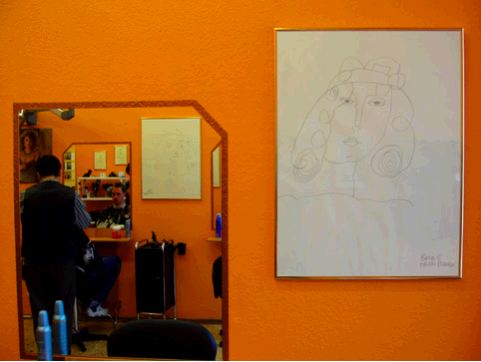
How did the kids appreciate that “their” drawings were in the show?
They didn’t know about it, but they got it quickly, presumably, because there are only a few hairdresser’s in the kiez where everybody always knows everything very quickly. Certainly it would have been correct to explain the whole project to them and ask each one for permission to use his or her drawing. But that would have been a quite different, pedagogic work in which I was not interested at all. Now the whole thing is rather clandestine and exciting.
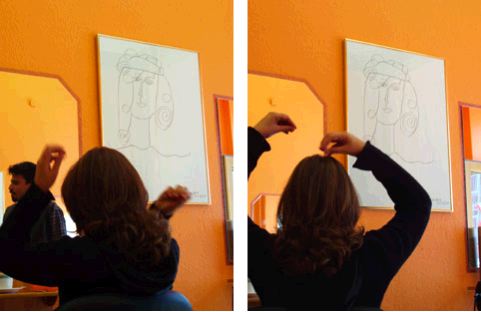
How would you describe the challenge?
Every day, I get emails from everywhere announcing shows of whom I don’t see 95 %! I never get emails which say: “Hey, we’ve done this great show! In case you couldn’t come you can have a look at it now in the web documentation!” No one makes it this way, and that’s exactly what I want to do with this project. Therefore, the documentation is an essential part of the work! - Important exhibitions are often remarked only later. But everyone who makes them wishes to get a big audience in order to say it was a success. My project constitutes other conditions: There are those who become a part of it by accident, and those who get informed later. I see my challenge mainly in working together with all those potential art institutions, with the people who work there. For me, Re-Institutionalize is an adventure, and I learn a lot and have fun doing it.
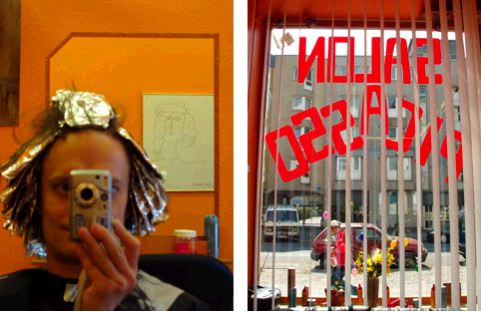
Interview: Heike Wetzig & Kristofer Paetau, April 2004
Re-Institutionalize # 01: Salon Picasso